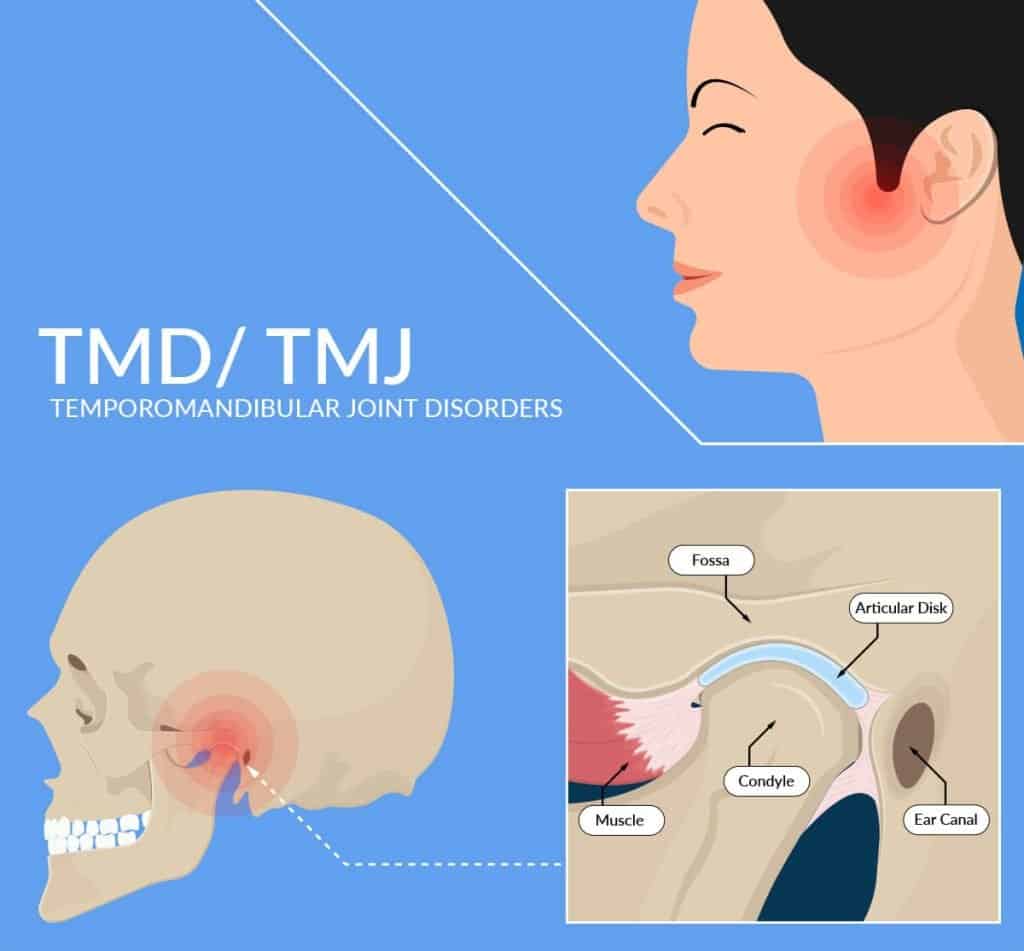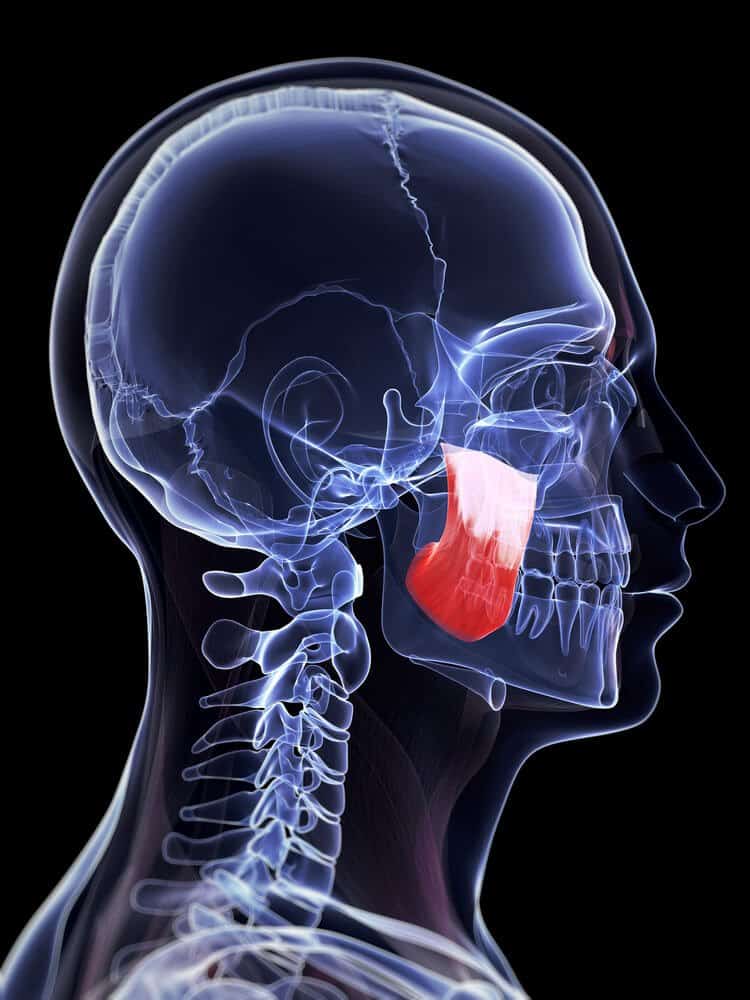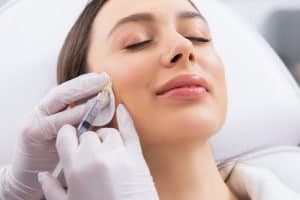Effective Botox Treatment for Jaw Pain
If you’re suffering from TMJ and have had just about enough of the relentless aching, here’s some information on a surprising treatment that might just relieve those stubborn symptoms. That’s right, it’s Botox. No worries, in this article we will cover everything about Botox for TMJ Relief.
You’re not alone in thinking it’s a treatment undergone exclusively for cosmetic reasons, but this procedure can actually be so instrumental in TMJ pain relief too.
WHAT IS TMJ?

Temporomandibular joint syndrome, more widely referred to as TMJ syndrome, or simply TMJ, is a condition that negatively affects the natural movement of the jaw and its surrounding muscles. Though it’s not a terribly serious affliction and, over time, can improve on its own, it can cause huge discomfort for those diagnosed. Constant pain also increases tension in the jaw, putting a strain on concentration and the ability to successfully navigate your day. Additionally, with little research into the condition, effective and long term pain relief is hard to come by. If you think you may be experiencing symptoms of TMJ, read on to discover the benefits that Botox may be able to offer you.
So, what are the symptoms?
Here’s what we know…
The severity of TMJ differs greatly from patient to patient. Most will experience one, or a combination of, the following:
-
Aching – Ranging from a mild ache in either side of the jaw to a more extreme pain spreading to the face, ears, eyes and temples.
-
Headaches – You may experience headaches centered in the temples as the pain spreads upward through your jaw towards your head.
-
Difficulty open your mouth – Finding it harder than usual to open your mouth to speak or eat is a common symptom of TMJ, some will suffer even more severely with lockjaw.
-
Unusual sounds – Some TMJ patients experience an unpleasant clicking or grinding noise when speaking or eating. This will often happen as you yawn or clench your teeth together.
-
Lack of sleep – This may be more of a side effect than a symptom, however, when laying down at night puts pressure on your jaw, many will experience difficulty sleeping. This, combined with the monotony of daily pain, can be tiring, which, in turn, puts further stress and tension on the joints, causing prolonged jaw pain.
Further Information provided by the National Institute of Dental and Craniofacial determines that this condition can be classed in the following three categories:
-
Myofascial Pain – caused by tension and fatigue within the jaw muscles
-
Internal Joint Derangement – from a misplaced disk or jaw dislocation
-
Arthritis – a degenerative and often inflammatory joint disorder
THE CAUSES OF TMJ

According to The TMJ Association, Ltd, ‘Approximately 12% of the population or 35 million people in the United States are affected by TMD at any given time.’
Though this is a huge percentage, unfortunately, the exact cause of each individual’s TMJ pain is difficult to pinpoint, as little is known about the condition. As a result, there is technically no cure for this disorder either, though we are becoming increasingly aware of preventative treatments such as Botox.
Some of the known reasons you may be experiencing this pain include, but are not limited to:
Clenching your jaw or grinding your teeth – Some people with this habit are lucky enough to never experience TMJ as a result. For some, however, repeatedly holding tension in your jaw, clenching your jaw in times of stress or grinding your teeth will cause or aggravate the condition.
Injuries – A new or pre-existing jaw injury could be the cause of prolonged jaw pain or cause flare-ups for those who have experienced it previously.
Osteomyelitis – Colgate.com describes this as, “an infection that travels through the body’s bloodstream affecting an individual’s bones and any surrounding tissues.” Those who contract this infection will usually experience jaw pain, facial swelling and an increase in body temperature.
Over-use – Following a dental procedure or mouth surgery during which the mouth has been in a static open position for a prolonged period, TMJ disorder can occur as a result.
Other causes can come from something as simple as favoring a certain side of the body to sleep on each night. Repeatedly putting pressure on your jaw for hours at a time each night can, over time, cause the jaw to become misaligned, therefore causing pain during everyday activities, such as speaking and eating.
LET’S TALK ABOUT BOTOX

It’s more than likely you’ve heard of Botox and have a basic knowledge of its benefits. However, if it’s a procedure you’ve not personally tried, we’re betting you have a fair few questions that we’re ready to answer. Let’s take a look at what you can expect from the procedure, as well as what exactly it’s used for and what you can expect in terms of results and possible side effects.
What is Botox?
Botox, (Botulinum toxin) is a neurotoxic protein derived from the botulinum toxin type A that, most often, is used cosmetically to reduce the appearance of lines and wrinkles for a smoother appearance. The majority of those using Botox injections will choose this particular treatment for age lines that appear around the eyes, on the forehead and between the eyebrows. Many also enjoy its benefits for contouring the jawline for a more defined and structured appearance.
As you’ll see from our helpful product guide, these are not the only uses and benefits of Botox. This injectable can also be used for pain management, including the successful ease of jaw tension and chronic pain in TMJ patients.
Wondering how that works?
Here’s the answer:
When Botox injections are administered to the affected area, it works as it does in reducing lines and wrinkles. Botox works by effectively relaxing muscles so they cannot contract.
How long after the procedure will you notice a difference?
In terms of pain, the sensitivity and discomfort in your temporomandibular joint will begin to diminish almost immediately. As well as relief from your prolonged aching pain, you’re likely to experience a more relaxed jaw incapable of tensing to cause stress-related headaches, as well as an end to habitual teeth grinding.
Regarding your appearance, as with the majority of medical treatments, the exact reaction time to a procedure will differ from person to person. That being said, most patients will notice a difference in the appearance of lines and wrinkles within 24-48 hours. The reduction in the appearance of age lines and wrinkles not connected to sun damage will continue to improve over the next week too.
Is it a painful treatment?
Any pain experienced during this procedure comes from the injections themselves. Those highly sensitive to needle pain may find it more discomforting than others. Your physician will use small needles to inject the Botox directly into the selected muscles, which can cause a small amount of swelling or bruising in the affected area. (Other possible yet minor side effects are listed below.)
THE PROCEDURE
Firstly, you will have a consultation with your experienced Plantation Med Spa physician to discuss the areas to be treated. They will talk you through the procedure, discuss the areas you’re having trouble with and answer any further questions you may have before getting started.
Next, the areas to be injected will be cleaned and small marks may be made on the skin indicating the areas to be injected.
Finally, the procedure itself…
Your Botox is administered by fine needles and injected under the skin. It’s a quick treatment that takes only minutes. The results, however, will be expected to last up to 3-6 months. After that time, it is recommended that you come in for repeated treatments to ensure you continue to experience the long term benefits of reduced lines and reduced, sometimes eradicated, jaw pain.
Are there side-effects?
As with any medical procedure, there is the possibility of side effects as a result of your Botox treatment. It is not guaranteed that you will encounter them, but patients can experience the following as listed on our treatment page:
Mild numbness or tingling in the injection area
Minor swelling or bruising around the injection area
An allergic reaction to BOTOX® Cosmetic
No improvement after undergoing treatment
Headache (temporary)
Nausea (temporary)
Drooping eyebrow or eyelid (usually temporary but can last two to three weeks)
Flu-like symptoms
THE BENEFITS OF BOTOX FOR TMJ PATIENTS
For TMJ patients, the results of Botox injections for pain relief has proven hugely successful. As mentioned before, this is not technically a serious medical condition in terms of its long term threat to your overall health, however, it can, at times, be excruciatingly painful and debilitating. When it comes to working, driving, and spending time with loved ones, few things are harder to deal with than an incessant aching, especially when it leads to headaches or prevents you from speaking, eating etc. without pain.
Botox can not only help decrease jaw tension and the resulting pain, but it can also relax the muscle enough that you’re unable to grind your teeth or clench your jaw through stress. This could not only benefit your teeth and your jaw muscles on a long term basis, but it may also eradicate headaches altogether.
Wondering if this is for you?
Anybody that has been diagnosed with TMJ, as well as those struggling to stop grinding their teeth (whether as a habit or as something you do unwittingly in your sleep), should consider Botox to treat their condition. Your doctor and our licensed physicians will be able to determine if this treatment is suitable for you in terms of your current health status.
Though each treatment is achieved with the use of ultra-fine needles, understandably, the thought of needles at all can be a fearful part of this procedure. It is, however, one we’ll be happy to discuss and talk through with you should you have any concerns.
BOTOX for TMJ Relief
It’s all about the Masseter muscle!
“What is the Masseter muscle?”
The masseter muscle covers the jaw and is therefore responsible for chewing, speaking and clenching during stressful situations or out of habit. It’s located just behind your molars.

You may notice its location when you’re particularly stressed or feeling overwhelmed, as its also the muscle you’re most likely to clench at these times, giving yourself a nasty stress headache. Additionally, the Mayo Clinic refers to this joint as ‘a sliding hinge, connecting your jawbone to your skull.’ Understanding the mechanism of this particular joint in this way helps us to better understand its mechanism and how it can become so easily overworked.
So, how do we relieve the pain from this overworked, often stressed muscle?
Some will opt for relaxation and meditation techniques to relieve stress and pressure on the muscle that way. Others will turn to massage, gently stimulating the muscle to increase blood flow to relax the jaw. For many of us, however, these techniques are merely a short term fix and the underlying issue re-occurs so frequently that we need further medical treatment.
That’s where Botox comes in…
With regular treatments, every 3-6 months, long term sufferers of TMJ report monumental improvements, with many attributing their newly pain-free jaw muscles totally to the effects of Botox.
GET YOUR PAIN-FREE SMILE BACK!

If you’re considering a Botox treatment to target your TMJ, then we will be more than happy to welcome you to our clinic here in Fort Lauderdale, Florida. Our fully licensed and experienced physicians are here to listen to your needs and concerns, to provide the best and most convenient treatment for your TMJ pain. Not only may you be about to wave goodbye to jaw pain, you’ll also experience a natural-looking, refreshed appearance, as well as our first class service.
Hopefully, in this article, we have covered everything about Botox for TMJ relief.
Book a consultion online now? Visit the Plantation Med Spa now to treat yourself to some of our many services and treatment offers! Call us at (954) 595-2607



